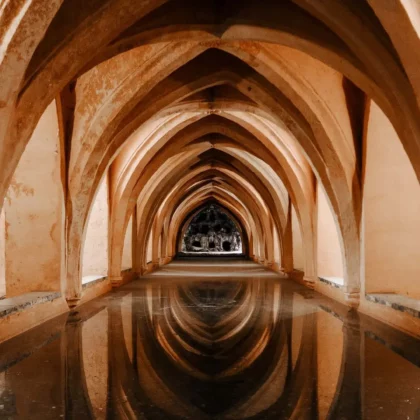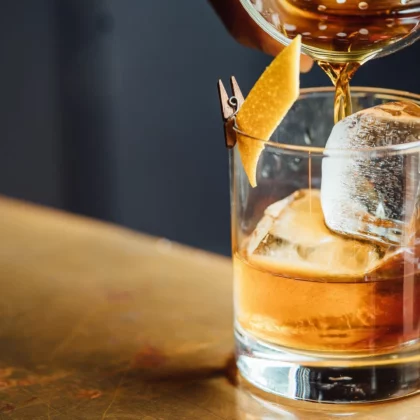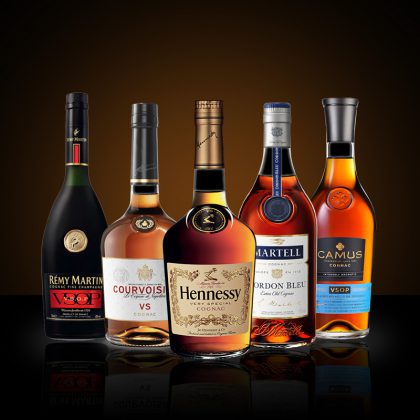Table of contents
The cognac geographical area
The cognac region is located in the southwest of France, above the Bordeaux wine region and below the Loire Valley.
The cognacs areas extend principally over the departments :
- of Charente,
- and Charente-Maritime,
- but as small parts also in Deux-Sèvres and Dordogne.
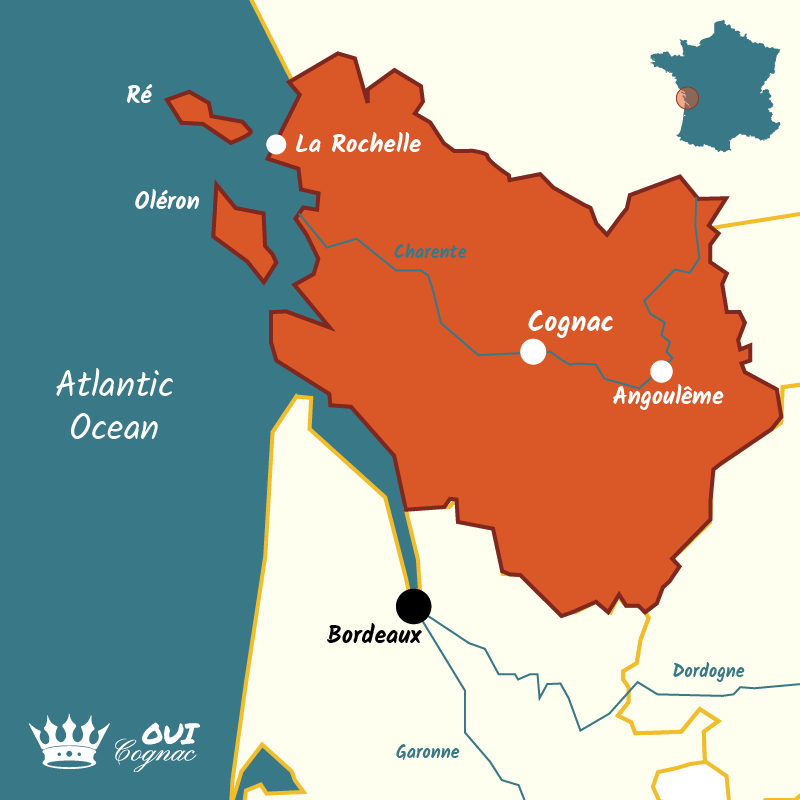
There are six vineyard growth areas, called cognac crus, but true connoisseurs called it “terroir”.
Only grapes grown within the legally defined region of France can be used to produce the delicious and refined spirit that is cognac.
This ensures the authenticity and high quality of the cognac product, making cognac unique to this specific area.
The official name is Cognac AOC (Origine Controlée Cognac), with around 79,000 hectares of vineyards (790 million meters²).
If you’re looking for a great tourism tour, don’t miss our post to fully discover cognac region: cities, monuments and lanscapes.
Funny facts
It’s the 1st French region producing white wine (sorry Alsace… we love you too !)
The topography of the cognac region
The topography of the Cognac region is characterized by a varied landscape that includes the ocean, rivers, hilly areas, plateaus, and plains.
It belongs physically, geologically, and climatically to the Aquitaine Basin.
But what a great place! Ocean meets lands, the Charente river going thru the region, two amazings islands “Ile de Ré” & “Ile d’Oléron” !

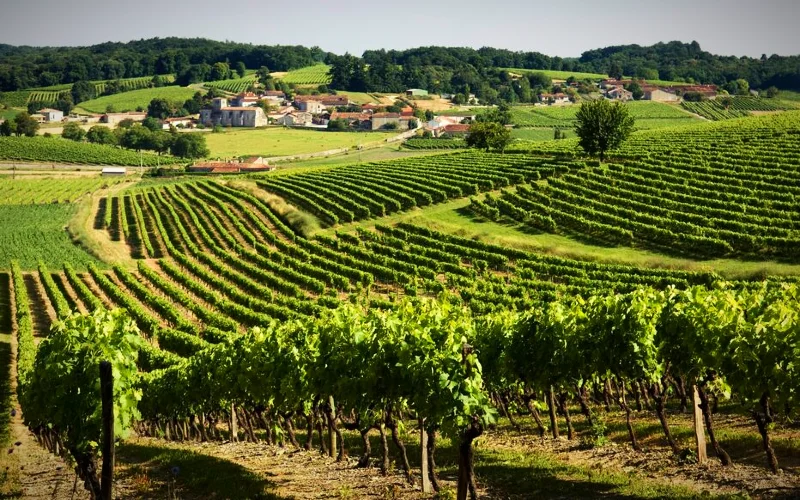
The 6 cognac crus
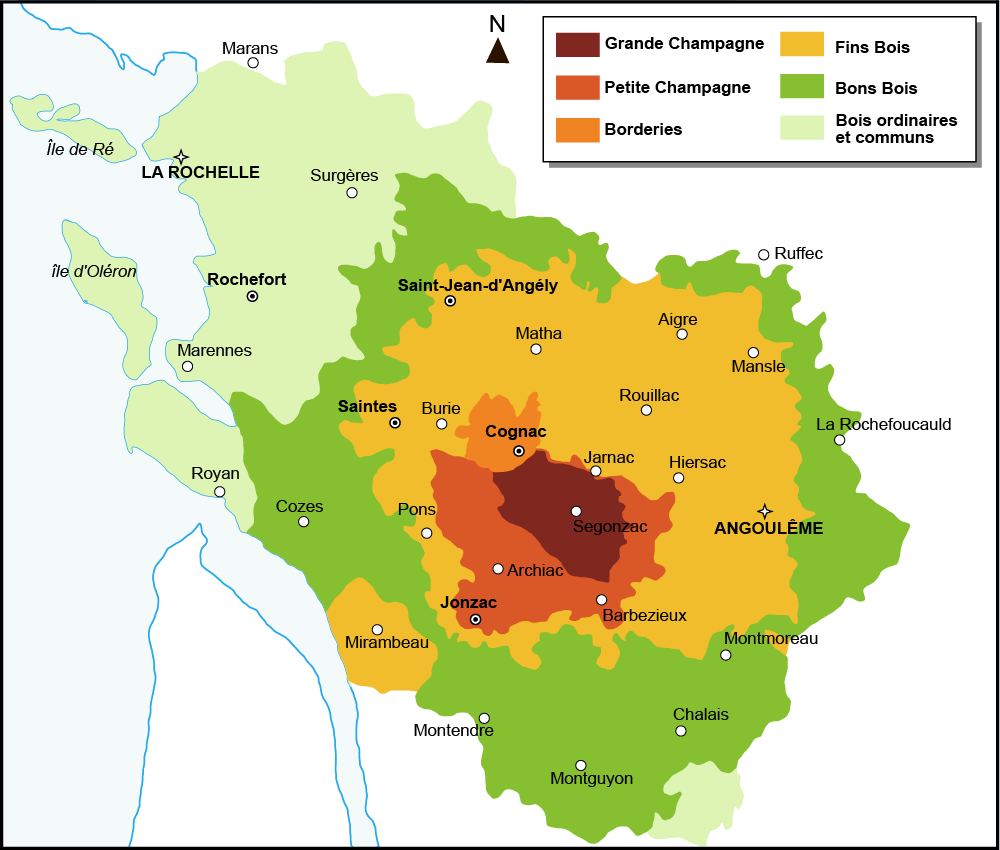
The crus are an unique place where both the geographical & climatic conditions can make the famous cognac.
Each terroir has its unique soil: the soil is so important! And every part of the cognac region has its soil specificity.
It nourishes the vines and grapes (Ugni blanc, Folle Blanche, Colombard…).
It leads to distinct differences in the resulting white wine. It produced the perfect white wine: light & simple, with the right amount of acidity.
Once double-distilled, these differences are also tasted in the final product: the cognac!
1. Grande Champagne
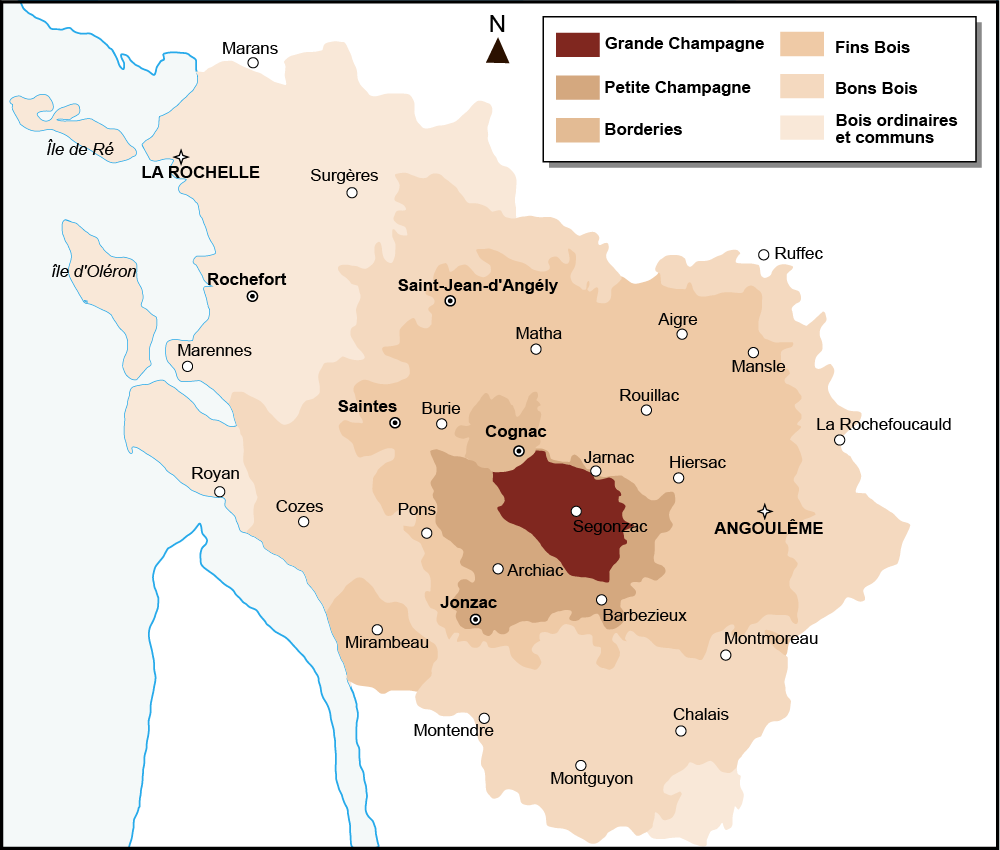
The Grande Champagne area is called 1er cru.
Vineyard: 13 250 ha, 17% of cognac area
This is the most renowned cru for its hilly terrain and chalk soils from the “Cretaceous” (you know Jurassic Park… kidding!)
The cognac produced here is considered the highest quality and is called “1er cru“.
A fine and elegant cognac. Very potent, with extra aging capabilities! (especially for XO)
2. Petite Champagne
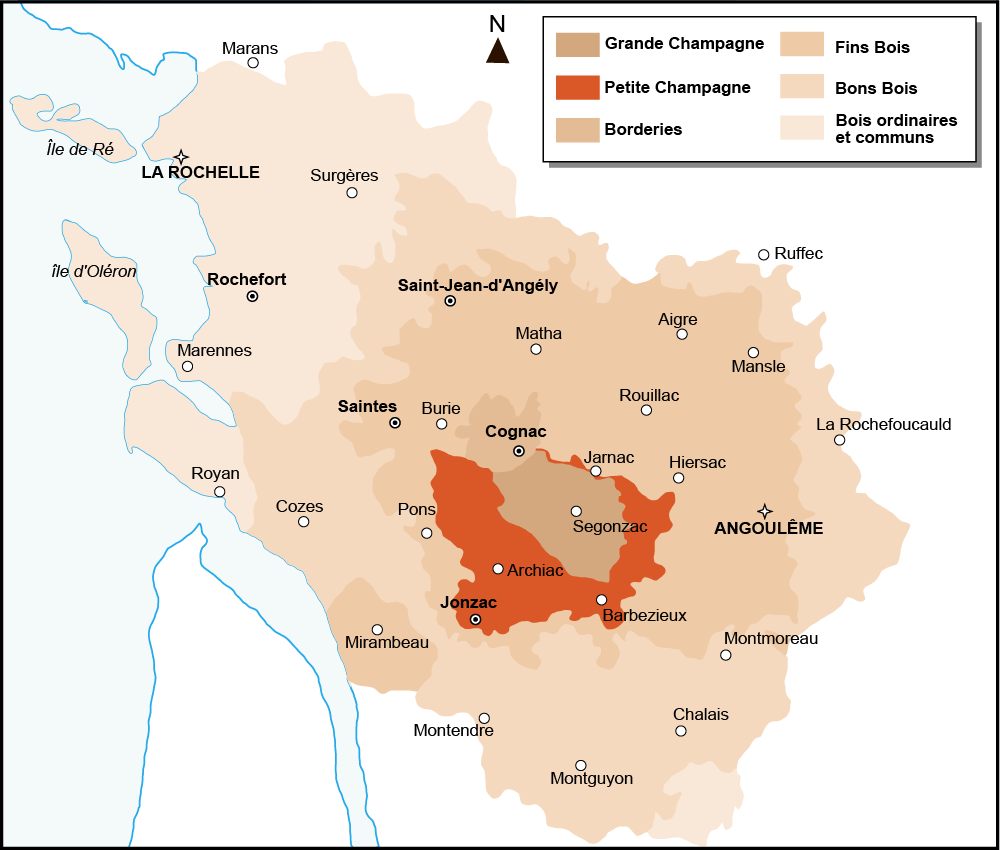
The Petite Champagne area is called 2ème cru.
Vineyard: 15 250 ha, 22% of cognac area
This cru is less hilly than Grande Champagne and has more compact chalk soils.
The cognac produced here is of high quality and is often blended with that of Grande Champagne to create “Fine Champagne” cognac (min of 50% of Grande Champagne).
It results in a less refined, less powerful cognac with less extra aging capabilities… (but it’s so subtle!)
3. Borderies

The Borderies area is called 3ème cru.
Vineyard: 4 000 ha, 5% of cognac area
This cru is situated on a plateau and has a mix of clay & silica soils. The smallest area.
The cognac produced here is known for its floral and nutty aromas, delicate, feminine…
4. Fins Bois
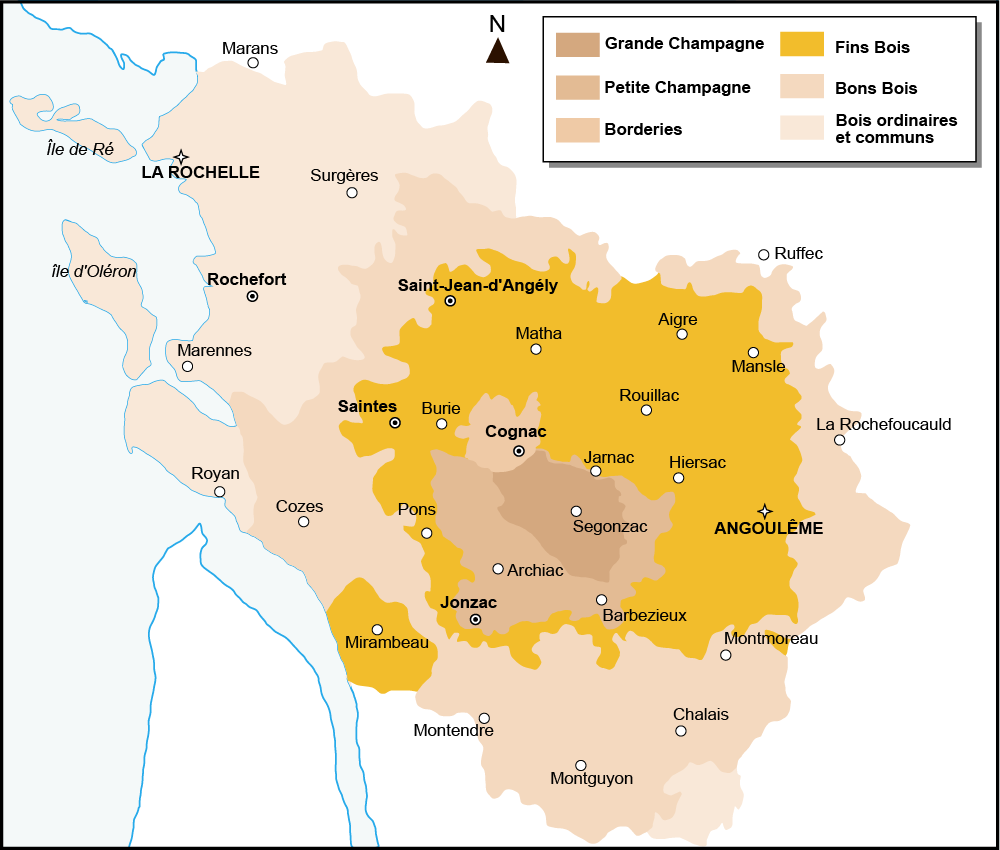
The Fins bois area is called 4ème cru.
Vineyard: 31 200 ha, 43% of cognac area
This cru has a mixture of soils, including clay, limestone, and sand.
The cognac produced here is known for its fruity and floral aromas. It quickly matures.
A particular area for VS & VSOP.
5. Bons Bois
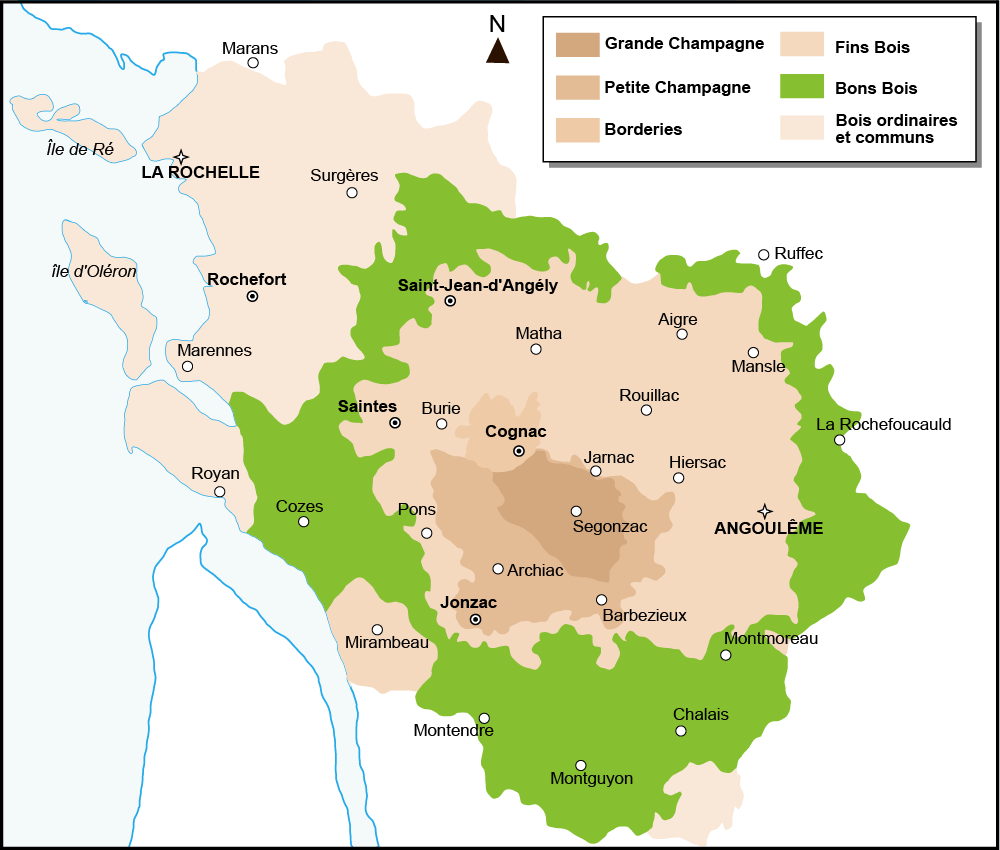
The Bons Bois area is called 5ème cru.
Vineyard: 9 300 ha, 12% of cognac area
This cru has sandy soils and is the largest cru in vineyard plantation.
The cognac produced here is considered lower quality than the other crus (but it’s so subtle; it’s a matter of taste!).
But it’s such a great cognac area!
6. Bois Ordinaires

The Bois Ordinaires area is called 6ème cru.
Vineyard: 1 066 ha, 1% of cognac area
This cru has the lowest soils (sandy) and is considered the lowest quality…
But so much originality! Near the ocean & presents on the 2 beautiful islands of Ré & Oléron!
The cognac soil
The soils in the region range from clay to sandy to chalky, and each one plays a crucial role in developing the grapes.
The soil in each cru plays a crucial role in developing the grapes and, ultimately, the cognac produced.
For example, the chalk soils in Grande Champagne and Petite Champagne provide the ideal growing conditions for the grapes and contribute to the distinct character of the cognac produced in these areas.
Everything to the east of the department is characterized by soils of impermeable crystalline rocks, sometimes covered with red clays, which are geographically and geologically located in Limousin.

The cognac climate & meteorology
The department of Charente has an oceanic climate of the Aquitaine, from Cognac to Angoulême, which changes towards the east into a degraded oceanic climate.
Mild temperatures and a high degree of humidity characterize the climate in the Cognac region.
The Atlantic Ocean influences the region, leading to a relatively mild winter and a moderate summer.
The region also receives a significant amount of rainfall, which is crucial for the growth of the grapes.
The meteorology of the Cognac region is closely monitored, as the weather can significantly impact the grapes and the quality of the cognac produced. The grapes harvest usually takes place in September and October, and the weather during this period can greatly influence the quality of the grapes and, ultimately, the cognac.
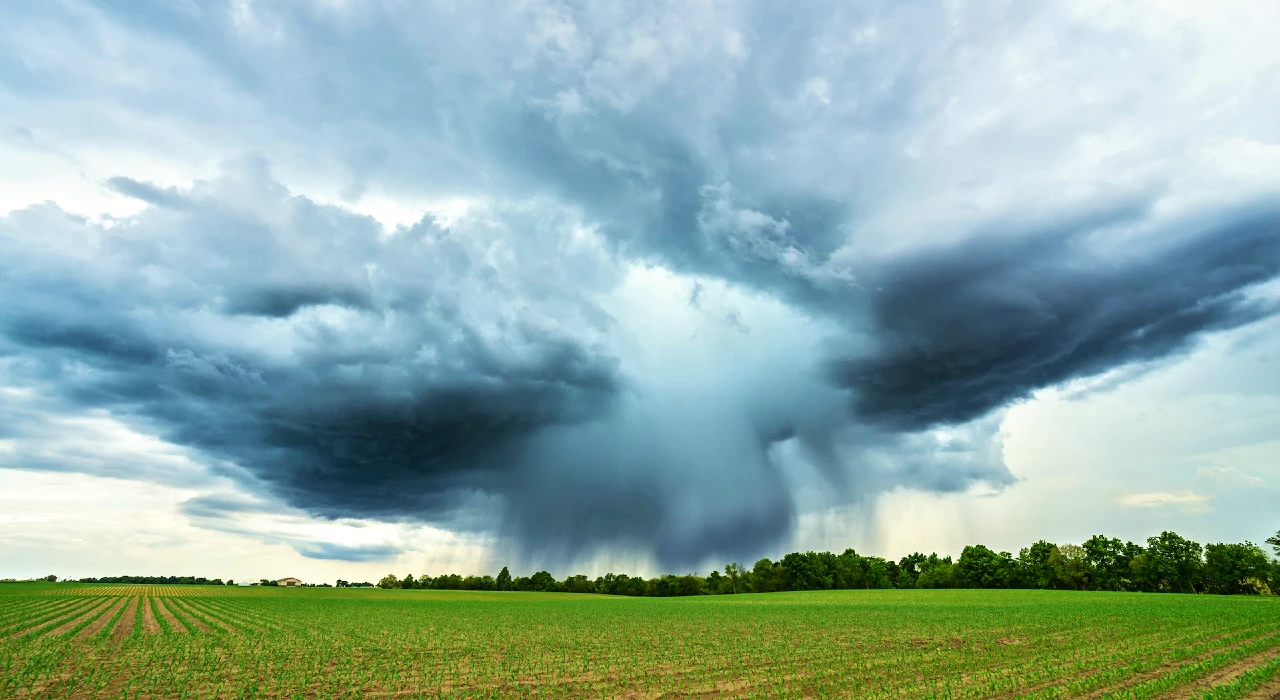
Go Beyond!
Well, now we’ve taken a tour through the six different terroirs of the Cognac region, and let me tell you, it’s been quite the journey.
As you can see, each terroir has its distinct personality, translating into an endless variety of flavors, aromas, and complexity.
Sure, the Grande Champagne and Petite Champagne cognacs will always hold a special place in our hearts but don’t underestimate the magic that can be found in exploring the other cognac terroirs.
So why not take a chance and try something new? You never know what kind of delicious surprises you might uncover.
With each cognac sip, you’ll be expanding your knowledge and your palate, and that’s a beautiful thing.
Cheers to trying new things and embracing all the wonderful variety the world of cognac offers!
